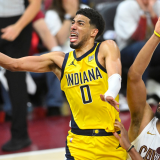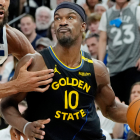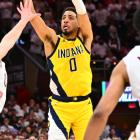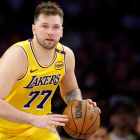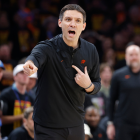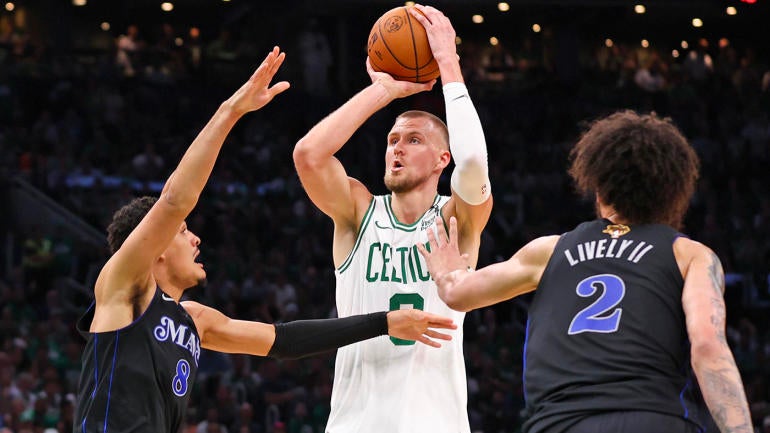
Boston Celtics big man Kristaps Porzingis is heading back to the sidelines. Late in the team's Game 2 win over the Dallas Mavericks in the NBA Finals on Sunday, Porzingis suffered a "torn medial retinaculum, allowing dislocation of the posterior tibialis tendon" in his left leg. He was ruled out of Wednesday night's Game 3 about 90 minutes before tip-off in Dallas.
This issue, which Celtics coach Joe Mazzulla called a "serious injury," is unrelated to the calf strain that kept Porzingis out for over a month during the Eastern Conference playoffs.
So what exactly is this injury? You'd be forgiven for not knowing considering that a 2006 study indicated there have only been 32 documented cases of a dislocation of the posterior tibialis tendon (the worst-case outcome) in the English language.
Jeff Stotts, a certified athletic trainer and injury analyst who runs In Street Clothes, gave further insight into the situation on social media:
"Re: Porzingis: The medial retinaculum is connective tissue that serves as the roof of the tarsal tunnel (think carpal tunnel but in the foot). It anchors multiple structures in place, including the tendon of the posterior tibialis.
"If the retrinaculum is torn, the tendon can shift out of place (dislocate), causing pain and instability of the ankle and foot.
"I only have one real comp in my database but it was in conjunction with other traumatic ankle injuries that required surgery. It will be interesting to see how this is managed but given his injury history there is reason for concern."
Evan Jeffries, a doctor of physical therapy, created a helpful graphic to show where the medial retinaculum and posterior tibialis tendon are on your body.
Updating clarification of the Kristaps Porzingis injury
— Dr. Evan Jeffries, DPT (@GameInjuryDoc) June 11, 2024
Essentially he TORE the “Flexor retinaculum” which holds the tibialis posterior in place
This allows the tibialis posterior to sublux (move out of normal area it’s housed)
This is a RARE injury and timetable is up in… pic.twitter.com/UtwTOxg2Sl
Porzingis had a wrap and/or brace on his left ankle while speaking to reporters on Tuesday and appeared to be moving freely, but, of course, walking around is much different than playing in a Finals game. If it were up to Porzingis, he would play. "I will die out there," he said after Game 2. To little surprise, the team isn't going to let him take any unnecessary risk.
"We've taken the decision to play out of his hands, because of the importance of him," Mazzulla said. "So he's going to do everything he can to play, and then we're going to leave it up to our medical team."
While the Celtics went 9-1 without him earlier in the playoffs, his return in Games 1 and 2 of this series was a massive boost against Dallas. He had 32 points, 10 rebounds and five blocks on 12-of-20 shooting in just 43 minutes and the Celtics were plus-25 with him on the floor.
Offensively, he can space the floor to pull the Mavericks' shot blockers away from the rim or hunt switches if he has a smaller player guarding him. On the other end, he's come up with some massive rejections and has altered plenty of other looks. As great as the Celtics' defense is, he's their only true rim protector (no offense to Derrick White).
Missing Porzingis puts more pressure on Al Horford and also forces the Celtics into some interesting lineup decisions. Do you give the back-up big minutes to non-shooting threats Luke Kornet or Xavier Tillman, which would allow the Mavericks' big men to linger around the basket? Or do you try to play small-ball with Jayson Tatum or Oshae Brissett at the five? Neither is optimal.
The Celtics still have the upper hand in this series with a 2-0 lead, but this matchup may have just gotten a lot more interesting.
![[object Object] Logo](https://sportshub.cbsistatic.com/i/2020/04/22/e9ceb731-8b3f-4c60-98fe-090ab66a2997/screen-shot-2020-04-22-at-11-04-56-am.png)




